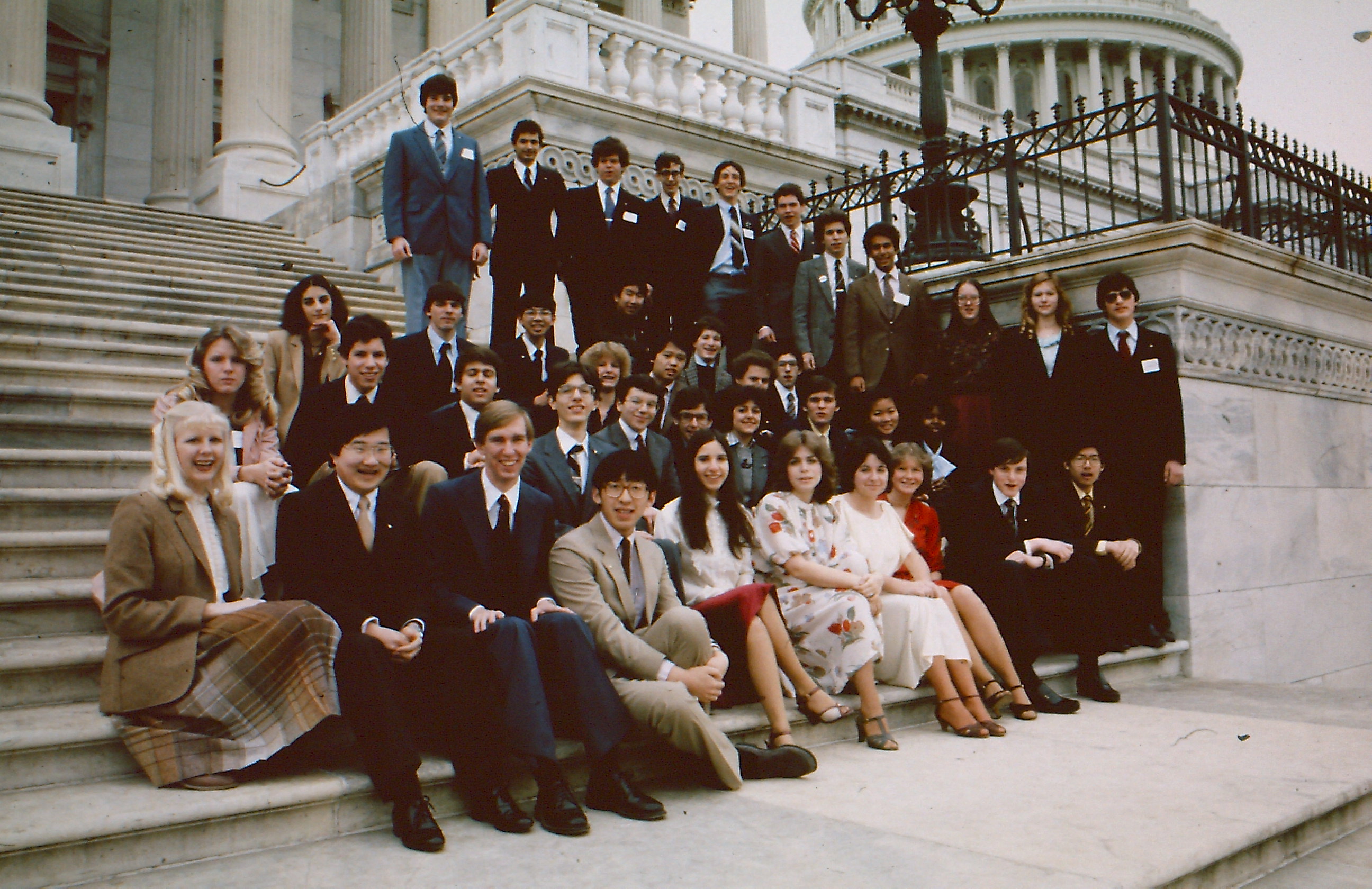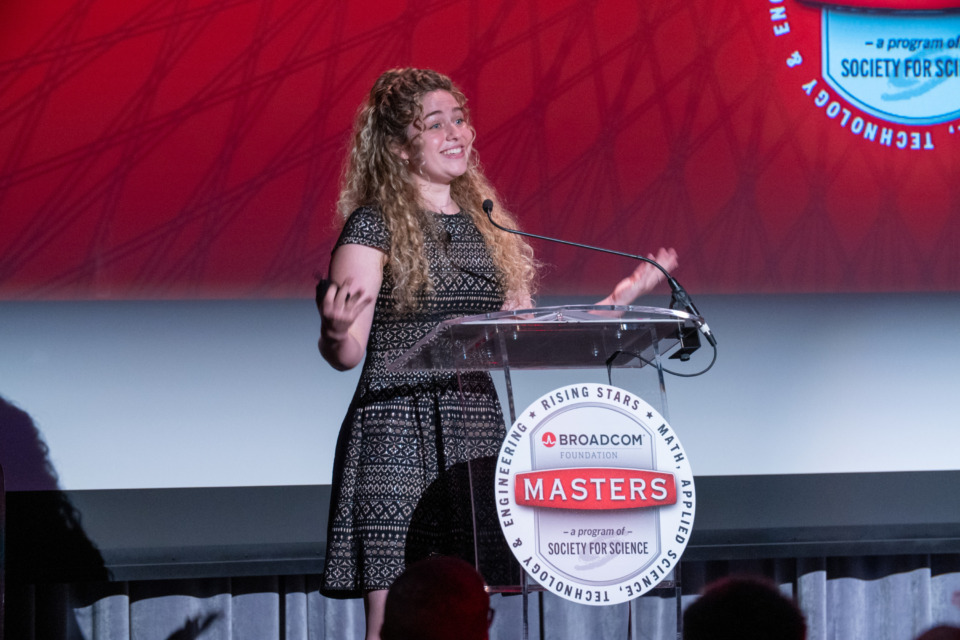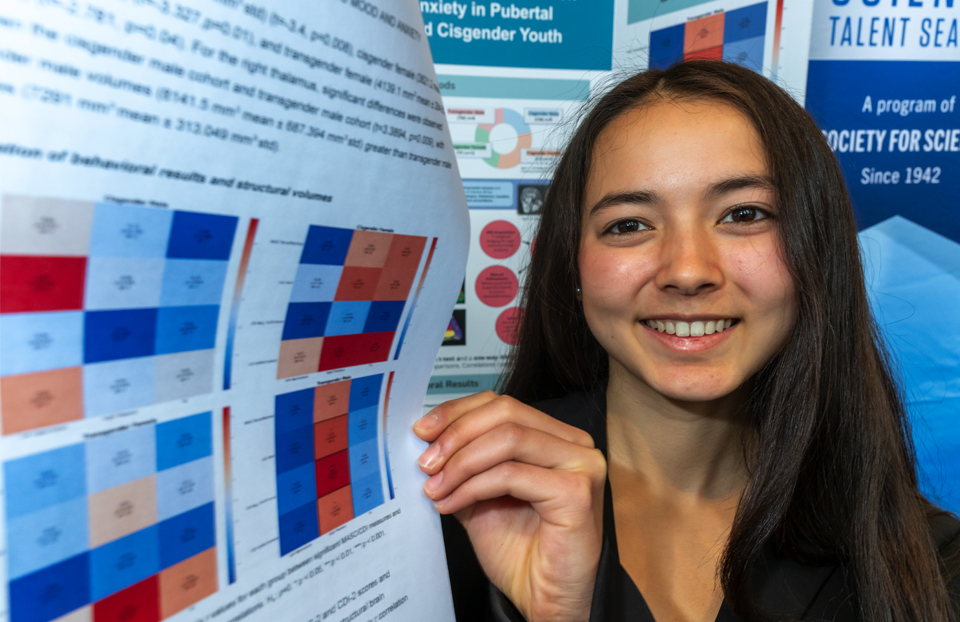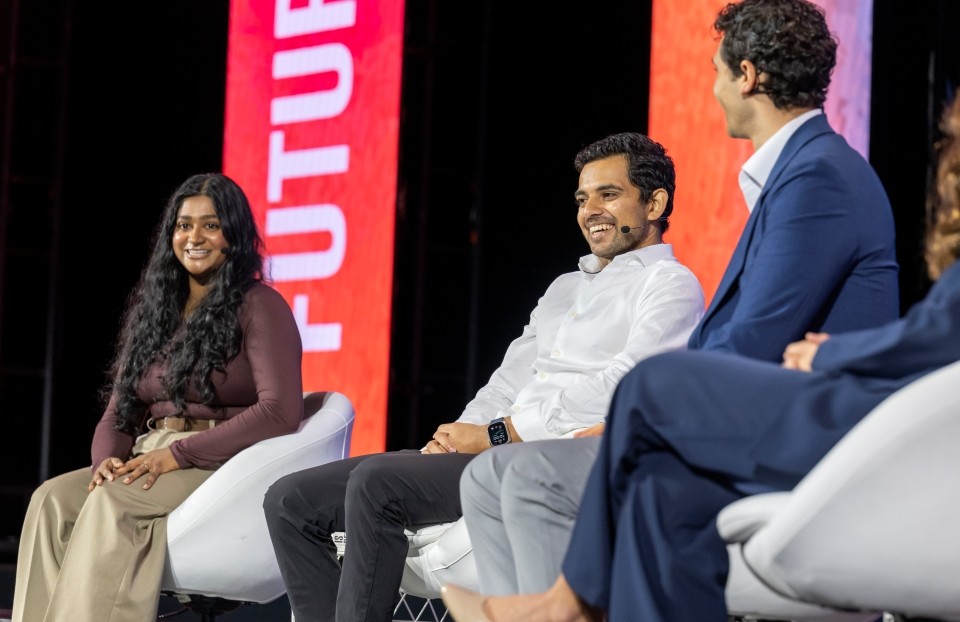Three decades later: A Science Talent Search alum shares his successes and motivations

By Laura Shaposhnikova
Frank Wang was a finalist of the 1982 Science Talent Search. Since participating in the program, Wang has gone on to build a successful business, receive multiple degrees in Math, and follow his true passion in teaching. We caught up with Wang to hear more about his experiences and successes.
Can you tell us about your STS experience? What was your favorite moment while participating in this event?
I was from Oklahoma and lived a pretty sheltered life. It was an eye-opening experience to travel to Washington, DC on my own to be with students from throughout the country. For students from the East and West Coasts, it probably wasn’t that big of a deal to travel to Washington, DC, but for a kid from a small community in Oklahoma, it was a big adventure.
The favorite memory I take from my time in Washington, DC was a visit to the University of Maryland, College Park and meeting Daniel Shanks, a mathematician and professor there at the time. I still remember getting a handful of cash to pay the cab to take me out to the University of Maryland campus. Shanks had written a book that I learned from. I was awestruck about meeting a real live author!
Can you give a brief description of the project you presented?
My project was in the field of number theory. I had developed a way of representing integers that I thought would be useful in studying their properties. My project title was “The Construction, Analysis, and Application of Modular Representations.”
I actually have a copy in my office because in my present job (as President of the Oklahoma School of Science and Mathematics), I teach high school juniors and seniors and sometimes share my project with them.

How did you get interested in this topic and/or science in general?
My seventh grade math teacher offered any student $100 for finding three positive integers a, b, and c such that a^n + b^n = c^n where n is an integer greater or equal to 3. This is of course the statement of what many consider to be the most famous of math problems – Fermat’s Last Theorem.
It turns out that there are no integer solutions to this equation. It took around 350 years to find the proof that indeed the equation did not have positive integer solutions. As a 7th grader, I was enthralled by the problem. My interest blossomed and I ended up getting a PhD in pure math from MIT (after getting my Bachelor’s in math from Princeton). My dissertation was in the area called algebraic number theory.
What have you been up to since then?
I ended up running a major K-12 textbook publisher, Saxon Publishers, Inc. I met the founder, John Saxon, when I was a 16 year old high school student. I worked for him for $3.25 an hour. He wanted to get his book published and no one would publish it, so he ended up founding his own company and self-publishing his book. Over time, his books sold more and more copies. The company grew steadily and was run out of Mr. Saxon’s home.
About a year before I got my PhD from MIT, he called me and asked if I would be interested in running his company, then a fledgling company with around two dozen employees. I told him I did not have any experience running a business and he responded, “Just fake it. Act like you know what you are doing and you will do just fine.” I “faked” it and grew it into a company with annual sales approaching $100 million. Mr. Saxon died in 1996, and I left the company in 2003 to pursue my lifelong desire and passion to be a classroom teacher.
Do you have any career highlights that you would like to share?
My passion is for teaching and making the concepts of higher math understandable and accessible to students of all ages and abilities. One of the things I am proud of is developing a way of teaching group theory (a part of an area of math called abstract algebra) using fruits. It’s kind of a “wild and crazy” way of teaching about an important area of math.
I’ve even taught it on live cable TV. And I have more than 1.5 million frequent flyer miles on American Airlines and have spoken to around 20,000 teachers.
You’ve mentioned changing careers several times, moving from getting a PhD in math from MIT to running a textbook publisher to becoming a classroom teacher. What inspired you to change professions?
All of the things I have done relate to education in some way. Even as a grad student at MIT I was able to teach in a major way. I was, I believe, the only instructor in an institute required course. I was the instructor for the class and a visiting associate professor served as the teaching assistant. (Usually, a professor teaches the class and a grad student is the recitation instructor. In our case, our positions were reversed.)
I really wanted to teach but had a National Science Foundation fellowship. I didn’t have to teach but begged the department for the opportunity. I ended up as the professor for Spring term Calculus and got really good ratings.
How did the skills you learned through STEM research help you in these different careers?
I owe everything that I am doing to my training in mathematics. I’ve been a math textbook author, a teacher of math, and a teacher trainer/professional development workshop leader for math. I was also on the advisory panel for President Clinton’s proposed national voluntary test. I would not be able to do any of those things without my advanced training in math.
What is your advice to young students interested in science and math?
Persist. Don’t give up. I’ve seen young people give up at the first flush of difficulty. Also, “play around” a little. Experiment. Make mistakes. Fail. Try again, etc. Not all learning is “book learning.” When I was doing my STS project, I played around with numbers and studied the patterns that I noticed.
In mathematics, one of the challenges is the non-user friendly way that math is often taught. Carl Friedrich Gauss, considered by many to be the greatest mathematician to have ever lived, said “When a cathedral is built, the scaffolding should not show.” This was illustrative of the way he thought math should be taught.
Students are presented a brilliant line of reasoning without knowing the motivation of why some concept or line of reasoning was developed. Students are only left to admire the brilliance of the argument. However, for students to learn how to develop mathematics on their own, they need to experience the “messiness” of uncovering the truth. I believe that not only should the scaffolding show, one should show students how to build their own scaffold.
Any other interesting stories you’d like to share?
Well, this may seem surprising. As a child, I was diagnosed with having neurological impairment based upon delayed milestones and “minimal suggestive neurological signs.”
I really had no early aptitude in math, unlike many who are the best in the field. I started doing math to prove the experts wrong. I believed that if one could show accomplishment in math, people would think that you were smart. So, my reasons for starting had to do more about proving myself capable of doing intellectual work (as the doctors told my parents that I lacked intellectual potential).
It’s not that I was brilliant and the doctors misdiagnosed me. I truly have difficulty learning math. It takes me awhile. I am slower than my students and often am at the board trying to figure out something that the students can do quickly from their seats. I believe I am an example of how much one can accomplish if one puts his or her mind to it.
Here’s a story about how I ended up doing a STS project. In junior high school, a friend’s mom mentioned the Science Talent Search. I overheard the conversation and I vowed it was something I wanted to participate and excel in. Literally from that day on, I started working hard on finding and developing a project.
Now, as the head of the Oklahoma School of Science and Math, I encourage young people to explore an area more deeply and to try to do some original work on their own. It’s a gratifying and fulfilling job and I am thankful to have it.


